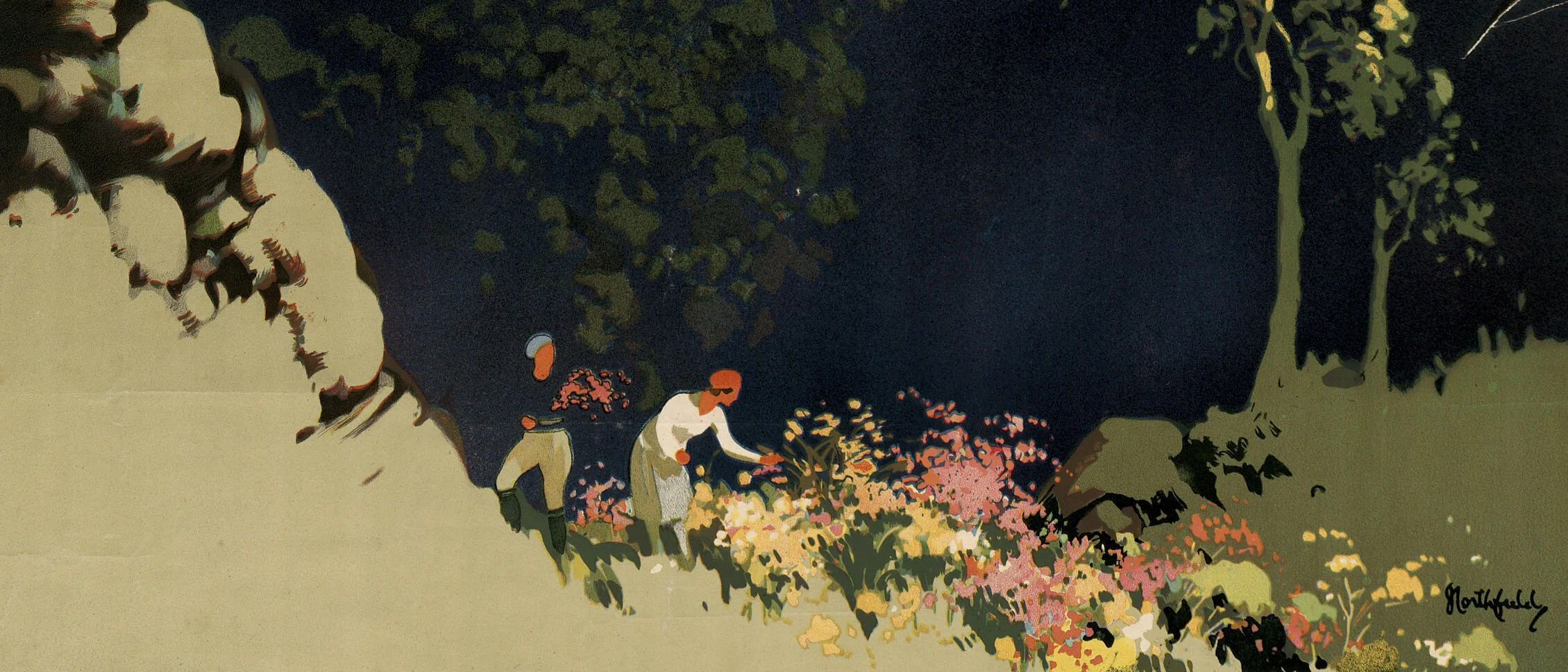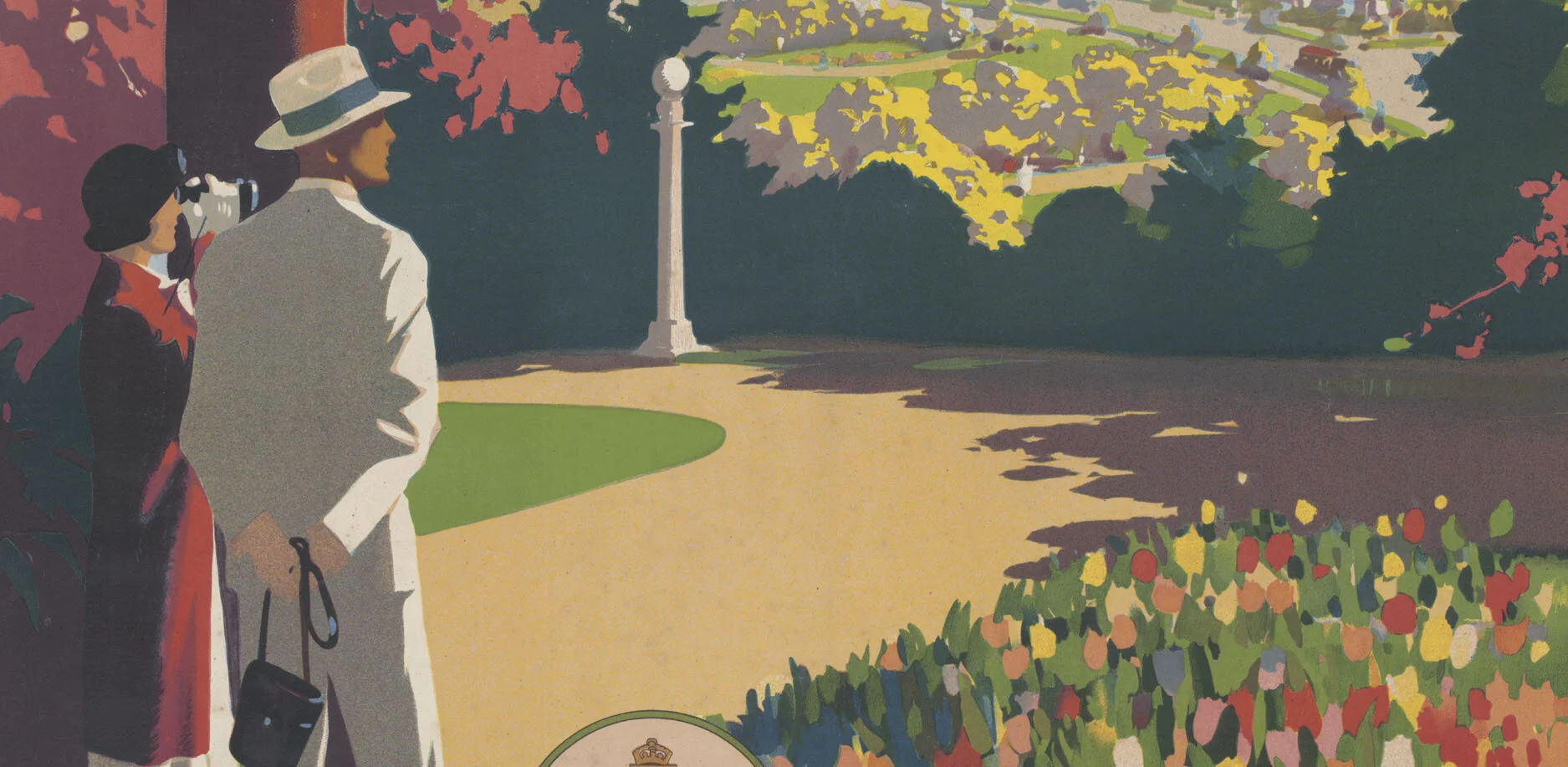Scholarship
James Northfield Lithography Scholarship
With royalties collected from the use of artwork by James Northfield, the James Northfield Heritage Art Trust funds an annual scholarship at the Australian Print Workshop (APW). The James Northfield Lithography Scholarship is awarded to contemporary women artists/printmakers who wish to develop their practice in the art of lithography. James Northfield was a pioneer of colour lithography in Australia 1920s-1950s, and this scholarship, launched in 2015, facilitates the continued relevance of lithography as an important art form via current artistic scholars.
“In fine art, the term lithograph…comes from Greek, meaning ‘writing with stone’. Lithography is noted for its ability to capture fine detail and subtle differences in shading. In this printmaking process, the artist draws the desired image directly onto a flat limestone surface using a greasy medium such as a special ink, known as tusche, or a litho crayon or pencil. When the drawing is complete it is fixed with a heavy syrupy solution of gum arabic and a small quantity of nitric acid. The gum arabic seals the drawing against the water applied during printing. Due to the mutual repulsion of grease and water, when the oil-based printing ink is rolled over the surface the ink will only adhere to the grease-receptive image area and not to the wet stone. The drawing is then transferred perfectly to paper.” Australian Galleries (2019).
The technique of lithography, relying on the chemical fact that water and oil do not mix, is believed to have been invented in 1798 by the German playwright Alois Senefelder, who used crayon to write on Bavarian limestone slabs. In 1837, Swiss artist Godefroy Engelmann introduced colour into lithography and invented the technique of chromolithography, a process that involves several lithographic stones each representing a separate colour. Colour lithography was revolutionised in the 1880s in Europe by French artist Jules Chéret with his 3 stone lithographic process. “Without lithography and without Chéret, posters as we know them would simply not exist.” Colour lithography spurred the modern age of commercial advertising symbolised by works such as Henri de Toulouse-Lautrec’s ‘Moulin Rouge’.
James Northfield, Swallow & Ariell’s, Biscuits & Cakes, c.1920s, Colour lithograph, 101.6 x 76.3cm. Images courtesy of JNHAT archives. Swallow and Ariell’s poster, illustrates the colour lithographic process. James Northfield used five plates or stones – red, green, yellow, blue and the final black plate – to produce the colour lithograph Swallow and Ariell’s Biscuits and Cakes poster. Left image: Three colour printer proof, Centre image: Four colour printer proof, Right image: Five colour final poster
Produced in the 1920s, James Northfield used five plates or stones – red, green, yellow, blue and the final black plate – to produce the colour lithograph Swallow and Ariell’s Biscuits and Cakes advertising poster.
“Even in its infancy, lithography as a process saw the advent of works of exceptional beauty, while in its maturity it was to become the dominant image-making process of the 20th century. In this context, lithography has helped to shape our visual culture, particularly over the last century, producing an enormous variety of images in an enormous variety of contexts, from high art limited editions by some of the greatest artists of our, or their, times, to mass produced items which show an equally extraordinary attention to design and execution. As such, it is a tribute to humble beginnings, astonishing ends, and the power of first impressions.”Mark HenshawCurator, National Gallery Australia, International Prints, Drawings and Illustrated Books.
James Northfield, Swallow & Ariell Ltd, Biscuits & Cakes, c.1930s, Colour lithograph, 100.3 x 75.5 cm. Images courtesy of JHNAT archive. Left image – Two colour printer’s proof, Centre image – Three colour printer’s proof, Right image – Four colour final poster.
Women and lithography in Australia
Chéret, Degas, Lautrec, Chagall, Picasso, Miro, Matisse and Escher are artists who are renowned for their use of lithography. In Australia, Boyd, Nolan and Olsen all made lithographic art at various stages of their careers and lithography was the medium by which James Northfield created his most celebrated work in the area of vibrant travel posters. Mary Morton Allport is said to be the first women lithographer in Australia. However, it is difficult to readily think of other women who used lithography in Australia. Working with large lithographic stones as a printing process was traditionally considered heavy work and not necessarily considered a ’suitable’ artistic practice for women at that time. Thea Proctor, studied the techniques of lithography in London, and worked with lithography in Australia in the early 1920s, but went on to be known for her woodcuts. Similarly, Margaret Preston did produce some lithographic works but concentrated more on lino-cuts.
This historical lack of women working in lithography is unlikely to be because artistic skills were inferior to their male peers, but more likely due to restricted opportunities as legitimate artists in an occupation where discrimination and disadvantage for women as artists remains rife in contemporary Australian society. There is still a significant pay disparity in the arts between women and men in Australia, as highlighted by Making Art Work: An Economic Study of Professional Artists in Australia (2017) by David Throsby and Katya Petetskaya, the sixth in a series of studies carried out independently over thirty years by Professor Throsby at Macquarie University, with funding from the Australia Council.
This APW James Northfield Lithography Scholarship contributes to addressing the long standing challenges women face when establishing and sustaining an art practice and a career as an artist in Australia. This scholarship began in 2015 and was positioned at a time when there was long overdue concern in Australia about the position of women in the Arts. The Australia Council, Women in Theatre (2012) identified a lack of women in creative leadership positions in the arts and the advent of the Stella Prize in 2013 was designed to acknowledge women writers who were not duly recognised in the Australian literary scene. The JNHAT lithography scholarship is another example of a project designed to address the imbalance of opportunities in the Australian workforce for women who engage in a visual arts practice.
The Australian Print Workshop
APW was established in Melbourne in 1981 and offers Australia's most comprehensive professional printmaking facilities attracting many of Australia's leading artists based on its reputation, acknowledged worldwide, for high-quality work and professional support facilities. APW is a unique centre providing both established and emerging artists with access to a wide range of printmaking equipment and expertise in the context of a world-class printmaking workshop. APW fosters the development of printmaking as a vibrant and progressive art form.
As many of the traditional printmaking facilities at major teaching institutions have closed down under pressure from the speed and cost effectiveness of digital printing technologies, opportunities to practice printmaking techniques such as stone lithography have diminished. During this period of change APW has become a repository for many traditional printmaking artefacts including litho stones and a Fag flatbed offset lithographic press. Lithography is deemed one of the trickiest forms of printmaking but also produces some of the most dazzling outcomes and is described by APW as the most painterly of printmaking techniques. The stone lithography undertaken and taught at APW involves mark making directly on to the surface of finely grained Bavarian limestone blocks. The APW employs artists who not only produce their own work but also mentor other artists in these printing techniques.
The APW James Northfield Lithography Scholarship, funded via royalties collected from the use of the works of James Northfield aims to:
facilitate opportunities for the art of lithography to be practised
encourage women artists to gain, explore and or enhance skills in lithographic printmaking
encourage artists to consider their own expression of space, place and time via lithography
redress an evidence-based imbalance in the career opportunities for women artists practising in Australia
This scholarship program is by invitation only and provides tuition, studio access, use of APW’s professional lithography facilities and equipment including electric and manual lithographic presses, a collection of over 100 lithographic stones, specialist nap rollers and other essential lithography facilities and tools; mentoring, technical advice and assistance provided by APW’s highly skilled Printers, and inclusion in a group exhibition at the APW Gallery showcasing a selection of works produced from the APW scholarship.
The following artists are APW/JNHAT Lithography Scholarship recipients




























